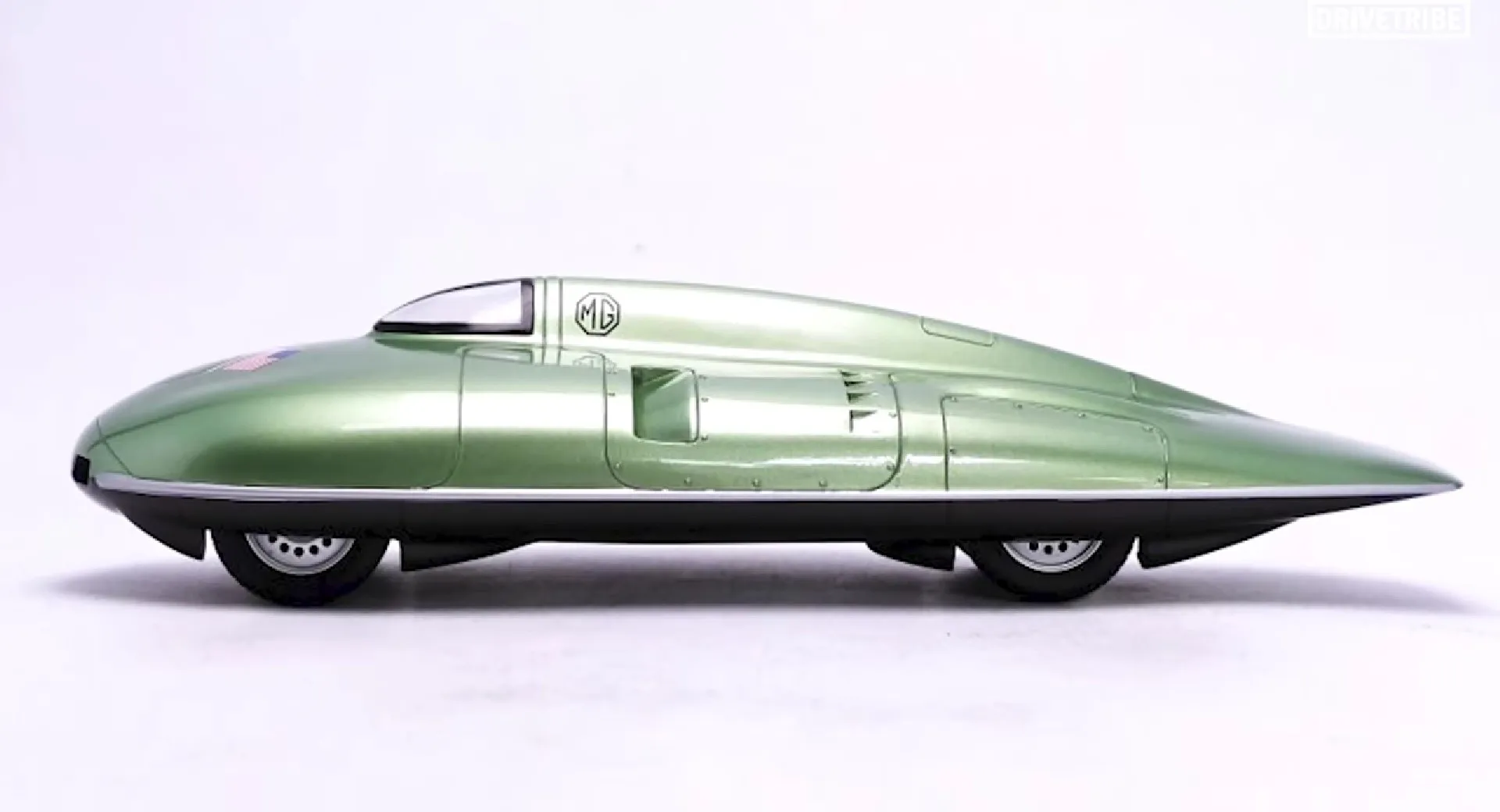The 1959 MG EX181: Less Power than a VW Golf R but Faster than a Bugatti Veyron [Watch Video]

Thursday, December 23, 2021 | Chimniii Desk
Key Highlights
- The Bugatti Veyron's 16 cylinders, 16.4 litres, and 1,001 horsepower (1,015 PS/746 kW) are required to breach the 250 mph (402 km/h) barrier, yet the MG EX181 required only a fraction of that power.
- According to DriveTribe, the high-speed experimental car was created in the late 1950s to pursue land speed records.
- Mercedes-EQS Benz's is renowned for its aerodynamic efficiency, with a coefficient of drag of just 0.20.This meant that the car required only 29 horsepower (29.4 PS/22 kW) to reach 100 mph, as MG claimed at the time.
- This incredible contraption accelerates at 0.84 mph for every horsepower produced by its engine.
- On the other hand, the Bugatti Veyron achieves a top speed of 0.23 miles per horsepower.
Advertisement
The Bugatti Veyron's 16 cylinders, 16.4 litres, and 1,001 horsepower (1,015 PS/746 kW) are required to breach the 250 mph (402 km/h) barrier, yet the MG EX181 required only a fraction of that power.
According to DriveTribe, the high-speed experimental car was created in the late 1950s to pursue land speed records. To demonstrate the company's technological superiority, it chose to use a modified version of the engine found in the MGA.
When the 1.5-liter engine was first installed in the MGA's engine bay, it produced only 68 horsepower (69 PS/51 kW), but with the addition of a large supercharger and 32 pounds of boost, it could produce 300 horsepower (304 PS/224 kW).
While that is a remarkable improvement, it pales in contrast to modern supercars and is about the power output of a modern hot hatch. Thus, the astounding top speed was due to more than just the increase in power.
Indeed, as you can expect, this was a highly slippery vehicle. Due to the form, which was obtained by narrowing the rear track width to match the front track width, some claim that the car had a drag coefficient of only 0.12. Mercedes-EQS Benz's is renowned for its aerodynamic efficiency, with a coefficient of drag of just 0.20.
This meant that the car required only 29 horsepower (29.4 PS/22 kW) to reach 100 mph, as MG claimed at the time. Phil Hill, the driver who set the automobile's 254 mph (409 km/h) speed record, stated the car was so slick that it barely slowed down when he let off the throttle.
In comparison to contemporary high-speed road automobiles, the MG EX181 appears to make incredible use of its horsepower. This incredible contraption accelerates at 0.84 mph for every horsepower produced by its engine. On the other hand, the Bugatti Veyron achieves a top speed of 0.23 miles per horsepower.
It's all a tribute to the remarkable things that may be accomplished when your sole objective is to move quickly.
Advertisement
Advertisement